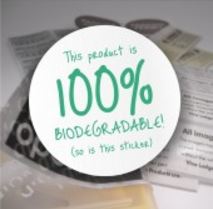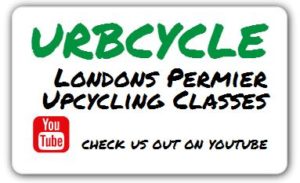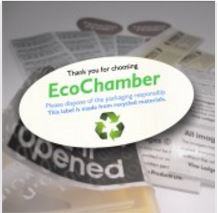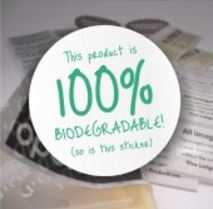The Importance of Using Environmentally Friendly Labels

It’s no secret that in this day and age, it pays to be green. As our awareness of the impact we are having on the planet increases, there is a growing need to develop sustainable and socially responsible practices in order to protect the Earth for future prosperity. For businesses, this means meeting the economic and functional needs of a company, while also attempting to preserve the environment for the future. This not only serves to give a business peace of mind that they are doing the best they can for the world, it also makes them more attractive to customers. As consumers are becoming more concerned about the consequences of their lifestyle, they’re more likely to invest in products that offer them a more sustainable choice.
Eco-Friendly
One way that many ‘green’ companies choose to improve their environmentally friendly credentials is through the use of eco-friendly packaging. This includes reducing the amount of packaging used, along with using biodegradable and recycled labels and materials. However, while such companies may feel they are making their offering more sustainable in this way, many go on to fall at another hurdle – by using standard stickers and labels. If all the packaging materials used aren’t environmentally friendly, then there’s little point in using them at all. The answer is to use eco-labels to complement your recycled boxes, bags, and envelopes.
What Exactly are Eco-Labels
Just like other environmentally friendly packaging, eco-labels are designed to be kind to the planet through the materials they are made from and how they can be disposed of. Their aim is to reduce the carbon footprint of your packaging, and are the ideal solution if your business aims to have socially responsible practices.
How are they Made
 Labels can be made in a variety of ways in order to be classed as environmentally friendly. Most commonly, eco-labels are made from either recycled materials or biodegradable materials, or often even both. For example, those made from recycled paper and natural adhesives that will then naturally break down. Similarly, the labels may also be recyclable themselves.
Labels can be made in a variety of ways in order to be classed as environmentally friendly. Most commonly, eco-labels are made from either recycled materials or biodegradable materials, or often even both. For example, those made from recycled paper and natural adhesives that will then naturally break down. Similarly, the labels may also be recyclable themselves.
Other forms of eco-label might be made from more sustainable materials than traditional labels. There are many ‘tree-free’ labels available that are instead made from plant-based paper, or film made from corn rather than petroleum. In these cases, the impact on the environment is much less than with traditional labels.
What to Look for When Choosing Eco-Labels
 As with many things that claim to be green, it can be difficult to know which https://www.stickylabels.com/eco-friendly-labelseco-labels are the real deal, and which are simply marketing themselves as such. As established at the beginning of this article, environmentally friendly products are very popular these days, and many products will unscrupulously try and cash in on this. Any claims of environmentally friendly products should be treated with caution, and you should ensure that such claims can be backed up before making a purchase. As you will often be charged more for ‘green’ products, you need to be certain you’re getting your money’s worth. Often companies may try and ‘greenwash’ their products with vague phrases, but these should always be backed up with actual facts.
As with many things that claim to be green, it can be difficult to know which https://www.stickylabels.com/eco-friendly-labelseco-labels are the real deal, and which are simply marketing themselves as such. As established at the beginning of this article, environmentally friendly products are very popular these days, and many products will unscrupulously try and cash in on this. Any claims of environmentally friendly products should be treated with caution, and you should ensure that such claims can be backed up before making a purchase. As you will often be charged more for ‘green’ products, you need to be certain you’re getting your money’s worth. Often companies may try and ‘greenwash’ their products with vague phrases, but these should always be backed up with actual facts.
When choosing eco-labels, there are several factors to look out for to ensure you are getting the best product for your money. Obviously, with any good product, you should be able to check what materials it is made from, and this should give you a good idea as to its true green credentials. As stated above, eco-labels should be made from recycled or biodegradable materials, or non-traditional solutions such as plant-based paper or corn. Any obvious plastics or petroleum-based materials should be well avoided. Eco-friendly products should also be non-toxic, so look out for any chemicals that could be hazardous to either humans or the environment.
Recyclable Content
Ultimately, when choosing your eco-labels you should ensure that any claims are thoroughly backed up rather than empty phrases. Manufacturing details should be able to let you know that the product is made with minimal materials, includes recycled or recyclable content, along with biodegradable and non-toxic materials. The labels don’t need to tick all of these boxes to be classed as eco-labels, but the more you can claim the better.
While you obviously want to be as cost-effective as possible when it comes to all aspects of your business, you don’t necessarily want to cut corners when it comes to environmentally friendly packaging. If you choose the cheapest product, it’s likely that you’re not actually getting what you’re paying for in terms of a genuinely sustainable product. Instead of relying on cheap prices, it’s worth the investment of offering your customers a truly environmentally friendly service.

 Login
Login Cart
Cart


